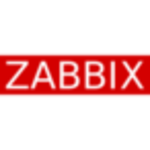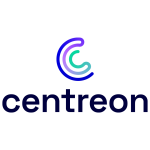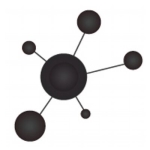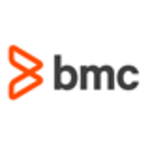What is our primary use case?
We are a small company of about 15 people. We do open-source kernel development for lab machines. We have about 100 of these machines and they are all connected using smart routers. However, it is hard to monitor the routers' states.
We do open-source driver development as a contractor for other companies that may have licensing issues. We write the open-source network drivers for Linux and other open-source operating systems. That is the reason we need good network monitoring software: so that we know where there are problems in our network drivers. If the network drivers produce very bad network traffic, we need to know the first time. We have a lot of test devices, laptops, running in our lab, and they are currently monitored by Auvik, and we are very satisfied.
How has it helped my organization?
Before we got Auvik, we had to write scripts to get every device's state, to see the upload speed and download speeds, and whether there was any abnormal download or upload bandwidth. Because we develop network drivers, these are very important metrics for us, so that we know if there is any bad traffic in our network. Previously, we had to update our scripts every time there was an update to our routers' firmware. And if we had to update our requirements, we needed to rewrite the scripts and redeploy them on all of our routers. That required a lot of manual work. Auvik helped us eliminate that work.
Previously, when we managed the system, we needed to write our own script to run a single command on all the routers. Now, we can do that on the console. We can select everything and run a single command for all the devices with a single click.
A lot of tasks used to be repetitive work, like for new-device support. One of the really great points about Auvik is that it helps to reduce all that toil, including debugging scripts and maintaining them for the latest version.
The most important thing is that you can control everything, every device, all at once. As a unified platform, it handles all kinds of devices and all kinds of brands. If we decided to buy a new brand of router, we wouldn't need to check the manual and write new configuration scripts or record configuration macros ourselves. Auvik handles everything for us.
Before Auvik, we used multiple applications for managing things. Every week, we save hours. Previously, we spent a lot of time watching dashboards to see what went wrong. When a bug would occur, we would need to dump all the logs and look at everything. Now, we can usually diagnose everything within 30 minutes to an hour. It is saving three to four software-engineer-hours per week. That is a lot.
Auvik saves time and effort for our IT team. We can automate more things with the help of Auvik. It makes our team more available, always. It not only helps with availability of the software engineers on the IT team but with the availability of all our IT people. It has eliminated a lot of low-level tasks. And sometimes, it could be reducing work for senior engineers. Some of our issues can be hard to resolve, especially when dealing with the in-lab hardware. It can be hairy. Those weekly hours can be better used for the introduction of new devices or maintaining the high availability of our devices better. We can focus on expanding our labs a lot. It makes us more scalable, overall.
What is most valuable?
One of the most valuable features is the remote monitoring. It monitors the egress and ingress bandwidth and you can add custom rules to monitor if something is wrong. You can also add your own metrics if needed.
Auvik provides us with a unified management console. It is a website that displays all your routers, network switches, and devices connected to that router. You can easily see everything in that single dashboard.
You can use rule-based or simple, program-based monitoring to see if there is any abnormal traffic.
It has good support for our devices, including our routers and Ethernet switches that come from the major brands. We are using Ubiquiti EdgeRouters, and Auvik has very good support for them. And it has pretty good support for other major brands like Netgear and TP-Link, as well. One of the reasons we choose Auvik is because the devices we currently use overlap with its list of supported devices.
What needs improvement?
Overall, the monitoring and management functions of Auvik are easy to use, but at times they seem oversimplified. Sometimes, we need more complicated scripting. Only using the basic logical rules like AND or OR or NOT is not enough. It can make the rules too complicated.
Also, when you load the Auvik website, it shows the topology. From my experience, it is mostly accurate. When we configured our network, there were some mismatches between the automatically-detected network topology and the actual topology. Some of the devices were not detected or were not supported by Auvik. We were able to manually modify things and everything has worked well since then.
Another issue is that to use Auvik you have to have a dedicated machine, either a virtual or Windows machine. Auvik continuously listens to the devices to look for all the devices on the network. This is a problem because it is a single point of failure. If that machine fails, all the functionality of Auvik stops. We can have redundant nodes, but it is still a problem.
Another problem is that it only works on Intel processors. Some of our machines do not use Intel processors. This was a problem initially because we had to get a new machine that runs the Auvik service. I would like to see it support more platforms and operating systems.
For how long have I used the solution?
We started the 14-day trial plan this summer, and then we decided to purchase a license. So we have been fully using it for four or five months.
What do I think about the stability of the solution?
So far, the uptime has been really ideal.
Performance-wise, it's also good. For our use cases the monitoring machine is just a server, but it is not that powerful. It uses a lot of networking I/O, but it hasn't caused any network congestion.
What do I think about the scalability of the solution?
How are customer service and support?
We have not been in touch with their technical support that often, but on occasion. Most of the team is in Toronto or the Eastern Time Zone and we are located in the Pacific Time Zone. But they are pretty responsive and their technical support team is pretty professional and reliable.
How would you rate customer service and support?
Which solution did I use previously and why did I switch?
We didn't use any solution other than our own scripts to maintain the network.
How was the initial setup?
As the head of IT, I led the work of deploying Auvik. It is straightforward because you use a new machine to run Auvik. It still needs to be part of the same VLAN as the other devices, but we didn't see any real glitches.
Our deployment is just a single location and we only use it for our lab devices. The lab has multiple layers of switches, Layer 3 switches, and routers, and all the test devices are managed over SNMP and Intel vPro.
After the collector was implemented, the network mapping went pretty fast. After it started running, it populated almost immediately, within minutes. But to get it fully propagated and have every device fully scanned took a while. That was expected.
We did our test of Auvik in a physically isolated, small testing network during the trial period. When we actually deployed it in our prod environment, it went pretty smoothly. We followed the playbook and it worked well.
The time that Auvik takes to search all the devices and get everything propagated is average or slightly above average. If there is a device update, for example, and a router reboots, it could take a while for it to be rediscovered by Auvik. I think that is because the frequency with which Auvik checks devices is pretty limited. If it worked otherwise, it would make the whole network congested. So the speed of checking devices is throttled and that means it could take minutes to get the latest state of devices. But once everything is online, you get real-time information.
We haven't had to do any maintenance on Auvik itself.
What about the implementation team?
We did it ourselves and we didn't run into any issues. We had two software engineers involved.
What was our ROI?
We have only used it for a few months, but in the future we are going to expand our testing-devices fleet. We are going to double our number of testing devices. For most of the tests, the waiting time will be cut in half. Developers will spend less time waiting for tests to finish running everything and spend more time on actual development.
What's my experience with pricing, setup cost, and licensing?
It is on a monthly subscription plan and it's charged by the device. We decided to use it for a year, first, to see how good it is.
PRTG Network Monitor and LogicMonitor were quite a bit more expensive compared to our current solution. Some of the other solutions we looked at are one-time purchases, but they are longer-term investments. For our projects, Auvik is more elastic. Per router, per month, it is a fixed price. We negotiated and got a more competitive price.
Which other solutions did I evaluate?
We did shop around for other network monitors to see what the best option was before we decided to buy Auvik. We tried PRTG Network Monitor and we tried LogicMonitor, but both are pretty focused on automatic network monitoring using protocols that are common to all devices, like SNMP.
Auvik attracted us because of two things. One was that it is easy to configure. You don't need to set up your own web server or something like that. There is a trade-off there. If you do everything yourself, you own all the data within your network. However, that scenario is more vulnerable to external threats. But if you give all the network topology to websites like Auvik, there could be some privacy or security concerns. We did an evaluation and it seemed that Auvik would be a reliable partner for us.
The second thing that attracted us was Auvik's pricing, which is pretty competitive.
In terms of deployment, Auvik is a mixed model. You don't need to buy a dedicated machine from Auvik, but you need something that can run the Auvik monitor, whether it is a Docker instance or just a physical machine. We chose to use a physical machine mostly for security. That gives us better physical isolation from the rest of our network and makes it easier to manage and monitor if an attack were to occur.
What other advice do I have?
As a very small company with a limited IT team, we found that Auvik is really helpful when you don't have a large IT team to do a lot of things. A lot of tasks can be done by Auvik and it will really help automate things.
The overall intuitiveness of the network visualization provided by Auvik is an eight or nine out of 10. There are some glitches, but it is easy to handle.
On the whole, it is a good solution. There are some issues, but I'm really satisfied.
Disclosure: PeerSpot contacted the reviewer to collect the review and to validate authenticity. The reviewer was referred by the vendor, but the review is not subject to editing or approval by the vendor.




















